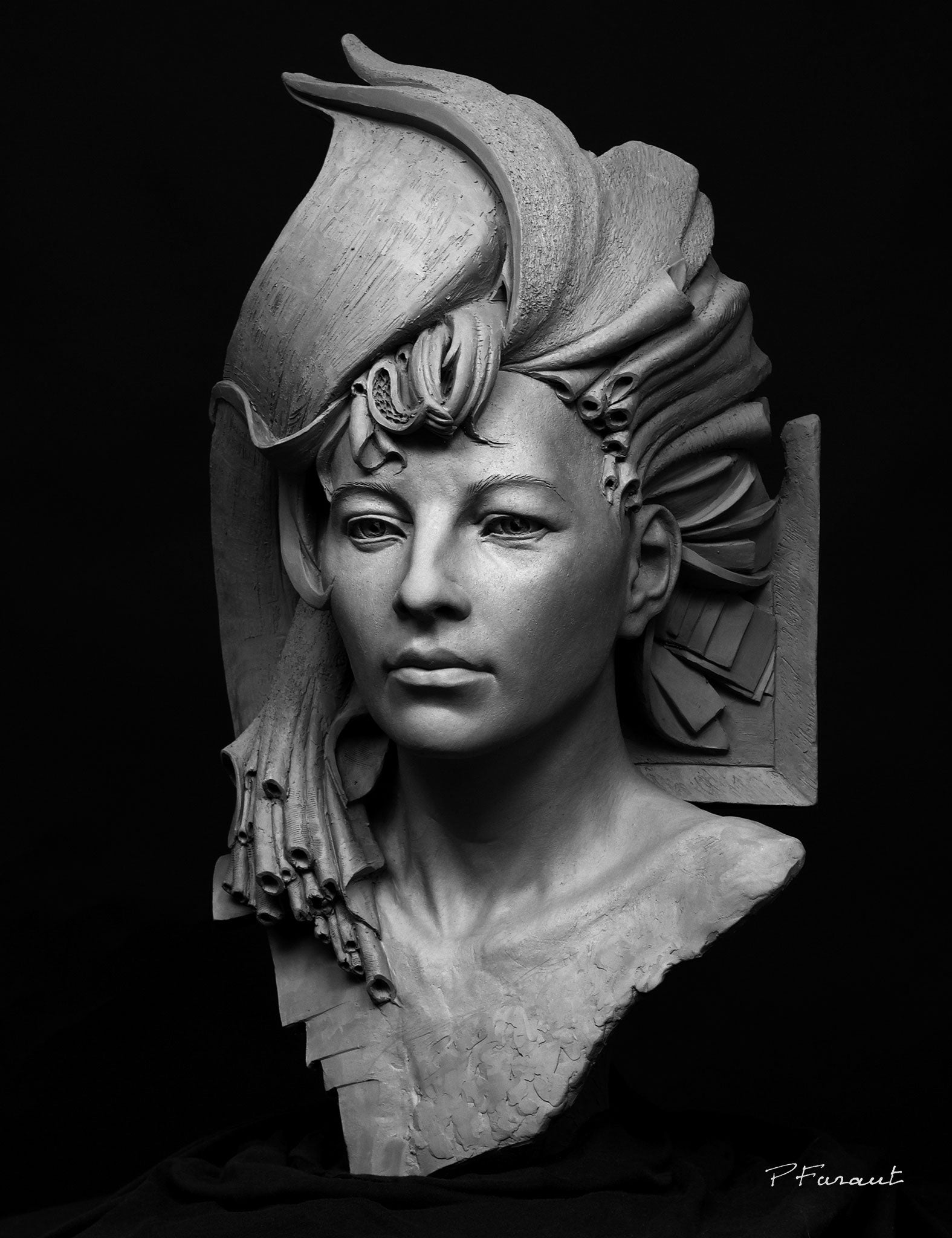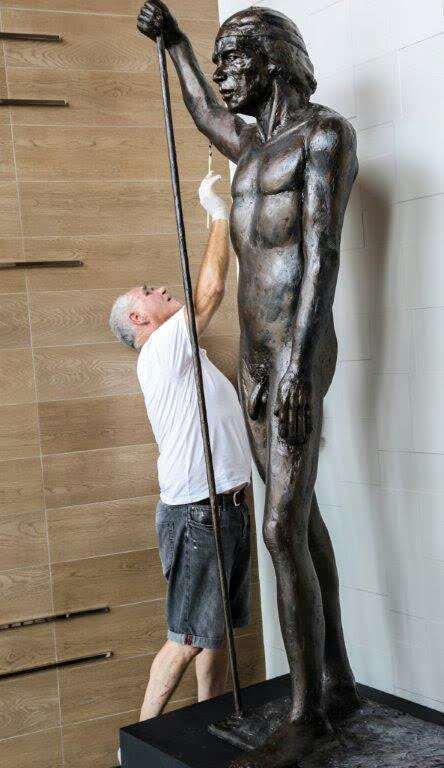Sculpting the Human Form: Portrayals of the Body in Sculpture
Forming the Human Kind: Representations of the Body in Sculpture is a thorough expedition of the imaginative representation of the human body throughout history. From the beautiful marble sculptures of old Greece to the intricate work of arts of the Renaissance, from the elaborate and flamboyant Baroque and Rococo sculptures to the avant-garde and abstract expressions of modern and contemporary sculpture, this exhibit provides a fascinating journey via the development of this timeless art form.
Ancient Greek Sculptures

Among the defining features of Old Greek sculptures is their emphasis on proportion. Each component of the body is carefully crafted to be symmetrical to the entire, creating a feeling of balance and consistency. The carvers paid careful focus to every information, from the placement of muscular tissues to the positioning of limbs, ensuring that each figure appeared both elegant and powerful.
The Greeks also valued the idea of idealized charm. Instead of depicting the blemishes and flaws of the human kind, they looked for to produce an idealized version of truth. The sculptures often represented goddesses, professional athletes, and gods, with their bodies sculpted to perfection. Robert C Hitchcock Sculptor. This idealized representation of the human kind not only renowned physical charm but likewise worked as a method of inspiring and uplifting the customer.
Renaissance Masterpieces
Proceeding the exploration of the portrayal of the human kind in sculpture, Renaissance work of arts further fine-tune the idealized concept of appeal, structure upon the unified and in proportion proportions of their Ancient Greek predecessors. During the Renaissance duration, which covered from the 14th to the 17th century in Europe, artists looked for to revitalize the classic suitables of old Greece and Rome. They studied and mimicked the works of the ancient masters, pursuing a sensible representation of the human body.
His work of art, the sculpture of David, exhibits the excellence and poise that ended up being associated with Renaissance art. Standing at over 17 feet high, the sculpture portrays the biblical hero in a state of calmness prior to his battle with Goliath.
An additional notable Renaissance artist was Donatello. His sculpture of Saint George, produced in the early 15th century, showcases the artist's capability to share strength and the aristocracy through the human type. The statuary illustrates the epic dragon-slaying saint in a positioned and positive position, emanating a sense of heroism.
Renaissance work of arts not just celebrated the physical charm of the human body but also shared much deeper emotions and definitions. With their precise focus to detail and experienced craftsmanship, Renaissance carvers raised the art of sculpture to brand-new elevations, leaving an enduring legacy that remains to influence musicians to today.
Rococo and baroque Sculpture
Rococo and baroque sculpture exemplifies the elaborate and elegant portrayal of the human form throughout the 17th and 18th centuries. Defined by its dynamic and significant design, Baroque sculpture intended to captivate visitors through its splendour and emotional strength. Musicians such as Gian Lorenzo Bernini and Alessandro Algardi produced sculptures that conveyed movement, usually portraying numbers in dramatic postures. Making use of light and shadow further boosted the sense of dramatization, developing a staged result.
Rococo sculpture, on the other hand, became a response to the grandiosity of the Baroque duration. It embraced a much more lively and delicate method, concentrating on decorative details and complex styles. François Boucher and Jean-Baptiste Pigalle projected Rococo carvers that crafted works defined by their elegance and beauty. They commonly depicted numbers in sensual and graceful poses, showing the lighthearted and whimsical nature of the Rococo design.
Both Baroque and Rococo sculpture put a great emphasis on the human kind, commemorating its appeal and sharing a variety of emotions - Portrait Sculptor. Whether it was the powerful and vibrant numbers of the Baroque or the graceful and enchanting numbers of the Rococo, these sculptures captured the significance of the human experience, leaving a lasting effect on the art world
Modern and Contemporary Sculpture
The advancement of sculpting the human form proceeds in contemporary and modern sculpture. Modern sculpture arised in the late 19th century as an action to the changing political and social landscape.
In the 20th century, the increase of abstraction and theoretical art brought new opportunities for sculptors. Musicians like Henry Moore and Barbara Hepworth checked out the partnership between type and room, creating abstracted and natural figures that challenged standard concepts of representation. Moore's significant bronze sculptures click for info and Hepworth's sculpted stone works are commemorated for their cutting-edge use of materials and their capability to stimulate a feeling of the body in a non-literal method.
Contemporary sculpture remains to press the boundaries of representation and explore new products and strategies. Artists like Antony Gormley and Ron Mueck produce hyper-realistic sculptures that challenge our understanding of the body, while others, such as Louise Bourgeois and Kiki Smith, make use of the body as a metaphor for individual and cumulative experiences. The human form continues to be an effective subject in sculpture, giving a system for artists to check out identity, emotion, and the human problem.
Social Viewpoints on the Body

In the expedition of sculpting the human form, the assessment of cultural point of views on the body discloses a diverse and rich tapestry of interpretations and representations. Throughout history, different cultures have actually held special beliefs and worths concerning the body, resulting in unique creative expressions - Bronze Sculptures. These cultural viewpoints shape the method the body is shown and perceived in sculpture, showing societal norms, religious ideas, and aesthetic perfects
As an example, ancient Greek sculptures commemorated the idyllic human form, highlighting physical elegance and athleticism. The sculptures depicted gods, heroes, and athletes with completely proportioned bodies, embodying the Greek principle of physical perfection. On the other hand, ancient Egyptian sculptures concentrated on the conservation of the body in the immortality, illustrating figures with idealized features and rigid positions. The Egyptians thought that the body must exist in a manner that ensured its timeless presence.
In a similar way, social point of views on the human body in African art commonly highlight communal identity and spiritual ideas (Equine Sculptures). Sculptures from numerous African societies portray the human body with overstated attributes, signifying genealogical connections and cultural worths. Native cultures in the Americas additionally have special point of views on the human body, usually portraying it in a spiritual context and highlighting the link in between humans and nature
The evaluation of social viewpoints on the body in sculpture enables us to get insight into the values, ideas, and aesthetics of different cultures throughout history. It highlights the diversity of human experiences and the methods which art shows and forms our understanding of the human type.

Final Thought
Finally, the portrayal of the body in sculpture has actually advanced in time, reflecting different artistic motions and cultural viewpoints. From the idyllic figures of Old Greek sculptures to the stirring and reasonable Renaissance work of arts, and the complex information of Baroque and Rococo sculptures, to the abstract and experimental types of contemporary and contemporary sculpture. The body has actually been a subject of attraction and creative expedition throughout history, showcasing the varied analyses and expressions of the human kind.
Sculpting the Human Type: Portrayals of the Body in Sculpture is a detailed exploration of the creative depiction of the human body throughout background. From the charming marble sculptures of ancient Greece to the detailed masterpieces of the Renaissance, from the flamboyant and ornate Baroque and Rococo sculptures to the progressive and abstract expressions of contemporary and modern sculpture, this exhibit supplies an exciting journey with the development of this ageless art type. Artists like Antony Gormley and Ron Mueck create hyper-realistic sculptures that challenge our understanding of the human body, while others, such as Louise Bourgeois and Kiki Smith, use the body as a metaphor for personal and cumulative experiences. The human type stays an effective subject in sculpture, offering a system for artists to discover identification, emotion, and the human condition.
From the idyllic figures of Ancient Greek sculptures to the emotive and reasonable Renaissance masterpieces, and the elaborate details of Baroque and Rococo sculptures, to the abstract and speculative kinds of modern-day and contemporary sculpture.